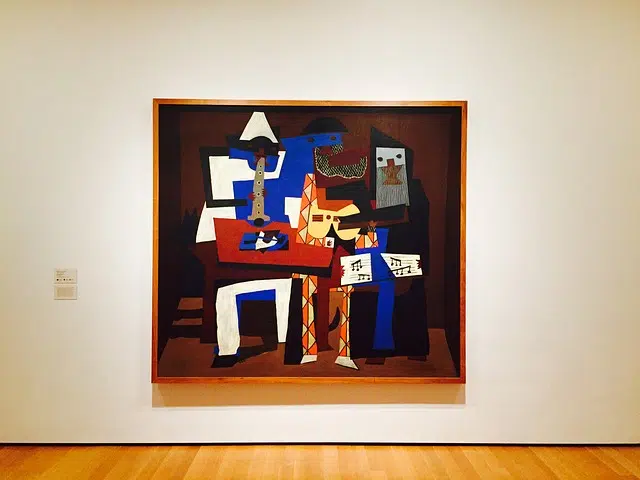
In cubism the use of geometric shapes stands out.
Cubism is an aesthetic school and theory of plastic arts and design. It is characterized by the use of geometric shapes , such as cubes , triangles and rectangles.
The movement was born in France and had its peak between 1907 and 1914 . The term cubism comes from the French word cubisme , which was proposed by the critic Louis Vauxcelles . This specialist made reference to the cubes that appeared in the paintings of artists such as Pablo Picasso , Juan Gris and Georges Braque , among other exponents of cubism.
From this aesthetic school, other European avant-garde movements developed that revolutionized the artistic panorama of the 20th century . However, Cubism is considered a pioneering avant-garde since it was responsible for breaking with perspective , the last Renaissance principle that was still in force at the beginning of the century.
Characteristics of cubism
The cubists sought to decompose natural forms and present them through geometric figures that fragmented surfaces and lines. This multiple perspective allowed, for example, to reflect a face both from the front and from the profile, both at the same time.
Another characteristic of Cubism is the use of muted colors such as green and gray, especially in the early period of the movement. Over time, the cubists began to incorporate brighter colors.
Beyond painting
It should be noted that, beyond painting, cubism reached literature . Calligrams combine poetry with drawings, organizing the text in a particular way. The French poet Guillaume Apollinaire was one of the main creators of calligram .
Among other fundamental names of the movement we can mention Juan Gris, Jean Metzinger, Albert Gleizes and Fernand Leger.

Pablo Picasso, author of Guernica, is one of the leaders of cubism.
Different phases of cubism
As a starting point of the movement we can point to "The Young Ladies of Avignon" by Pablo Picasso, in 1907. Since then, cubism proposed a new form of art ; where form, perspective, movement and space were protagonists but were understood in an aesthetic way very different from that known until then. It was a mental art , that is, it is detached from interpretation or similarity to nature.
It is important to note that this was the first avant-garde that appeared in graphic art , which was flatly opposed to the booming movement of the time, Renaissanceism , where perspective was given fundamental importance. In cubism, this disappeared and fragmented into lines and surfaces; This new way of understanding perspective was called multiple perspective. There is no longer a single point of view nor is there a sense of depth or detail.
In this movement there are two very different phases :
* Analytical Cubism : It is also known as pure cubism and is the most complex to understand. It is based on the decomposition of geometric shapes and figures to analyze and rearrange them in a different and decomposed way.
* Synthetic Cubism : it followed the previous trend and was based on the recomposition of objects, that is, no longer on the detailed analysis of their forms, but on capturing the essence of their physiognomy. These artists highlighted the most significant parts of the figure through predominant colors and shapes. At this stage, the collage technique and the use of elements from everyday life emerged, allowing us to offer a global image offering a concrete reference.
The emergence of photography
Finally, it should be added that the appearance of photography on the scene was fundamental for the absolute liberation of graphic art.
By representing reality itself more accurately than painting , it allowed it to become more abstract , by removing the weight of having to represent things as they appear in reality in order to transcribe them.
